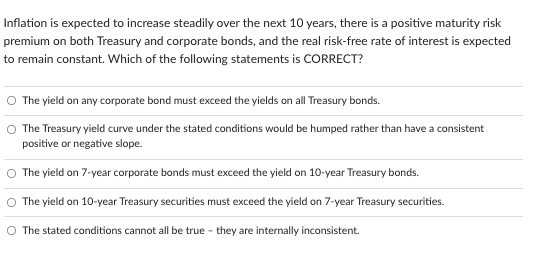Answered step by step
Verified Expert Solution
Question
1 Approved Answer
Suppose the real risk-free rate is 3.50%, the average future inflation rate is 2.50%, a maturity premium of 0.20% per year to maturity applies, i.e.,


Step by Step Solution
There are 3 Steps involved in it
Step: 1

Get Instant Access to Expert-Tailored Solutions
See step-by-step solutions with expert insights and AI powered tools for academic success
Step: 2

Step: 3

Ace Your Homework with AI
Get the answers you need in no time with our AI-driven, step-by-step assistance
Get Started


